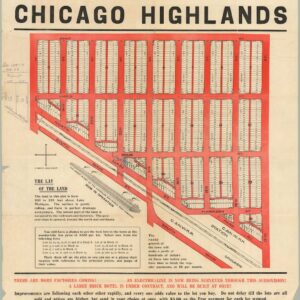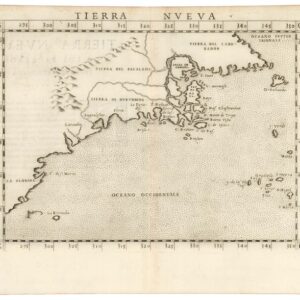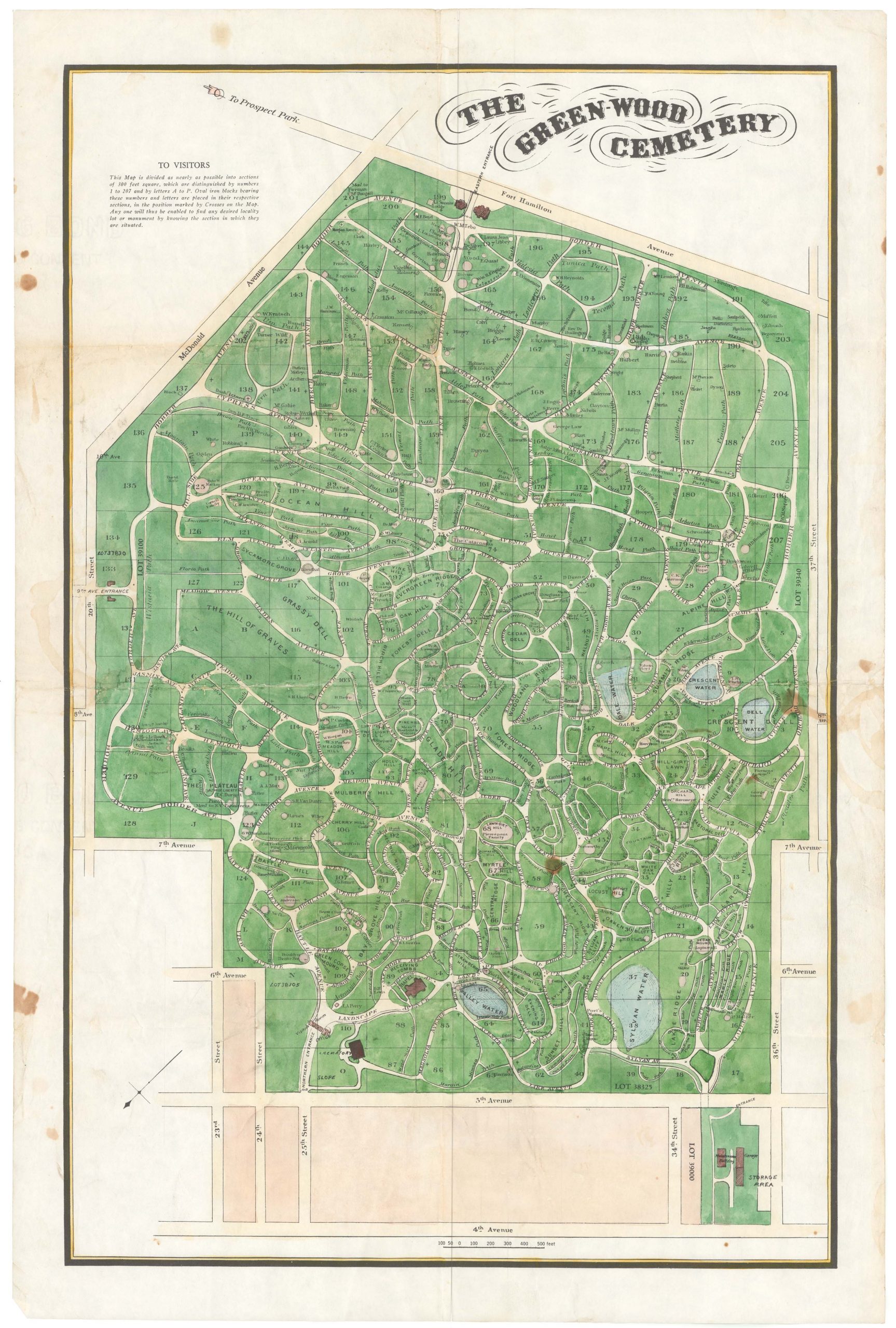A stunning large-format chromolithographed broadside for New York’s Continental Fire Insurance Co.
[19th-century Commercial Art] CONTINENTAL Fire Insurance Co. of New York.
Out of stock
Description
This monumental and scintillating turn-of-the-century poster was conceived and produced as a commercial broadside for the Continental Fire Insurance Company of New York. It was created by the J. Ottman Lithographic Company, which operated out of the historic Puck Building in the Nolita neighborhood of Manhattan.
The commercial broadside is divided into three spaces, each occupied by well-composed and somewhat contrastive views of the United States. The dominant central scene shows a Native American community observing and discussing a herd of buffalo, mustangs, and deer fleeing a burning prairie or forest in the distance. Flanking either side of this rather dramatic view are depictions of the Continental Fire Insurance Company’s buildings in New York and Brooklyn. These images are as carefully crafted as the central scene and so rich in detail that they make the subject easily recognizable for anyone familiar with New York’s urban landscape.
By juxtaposing the images, the designer of this broadside has created an elegant and balanced composition full of symbolism and contrast. In unison, the two flanking images occupy the same amount of space as the larger central scene, thus creating compositional balance. But the imagery is also designed to visualize the contrast between modernity and tradition in American society, between the old and new way of being American.
One might logically question the use of Native Americans as a central motif, for indeed, this was not the primary client base for Continental Fire Insurance, nor were they the audience for which this broadside was intended. Instead, the central scene is an overtly romanticized image that is meant to instill a sense of concern and pending danger but, at the same time, distances viewers from the actual calamity by setting it in the alien and “primitive” world of the American Indian.
Despite the approaching fire, the Native Americans in the scene do not seem overly concerned. While it is difficult to gauge the intentionality and motivation behind this relaxed atmosphere, one does note the small stamp on one of the teepees, which establishes it as insured by the Continental Insurance Company of New York.
In addition to conceptually distancing the calamity that Continental insures against and juxtaposing New York’s modernity with the “primitive” lifestyle of the indigenous population, the broadside’s design had the benefit that it could be adapted to available space. Thus, one or both of the flanking images of the insurance company buildings could be cuter folded to adjust the broadside to a reduced space.
Consequently, examples of this broadside, which have had the flanking images trimmed away, also figure in institutional collections (e.g., an example that only includes the central scene held in the Jay T. Last Collection of Graphic Arts and Social History at the Huntington Library / https://hdl.huntington.org/digital/collection/p16003coll4/id/4997).
The broadside was a great success and continued to be produced for almost twenty years (1886-1906). The copyright for Neatline’s example dates to 1895, suggesting that amendments were made to the imagery over time and that this prompted copyright updates. Coincidentally, the time frame for producing this print corresponds more or less to the lifespan of the lithographic company that created it. Despite not carrying a clear date, one may surmise from the details of the New York images that we remain within the last years of the 19th century. Top hats and corseted dresses adorn the passers-by, and New York’s urban transport still consists of horse-drawn carriages.
In addition to being a beautiful composition, this broadside constitutes a grand and fascinating example of early American commercial art. It captures some complex dynamics that characterize American history and still need to be fully acknowledged and appreciated when this lithograph was first produced. Yet it also reflects the free-market and capitalist drive that made the United States the world’s richest and most powerful country.
Census
The J. Ottman Lithographic Company in New York produced this chromolithograph. It was created in multiple versions, prompting multiple copyright dates, but the composition changed little (among the elements modified were the fonts used for the company name).
We have found several different versions in institutional collections across America. These include examples in which the flanking images have been cut away. Because of this commercial, the broadside’s long life and multiple editions can make identifying them in institutional collections difficult. The OCLC does not list individual holdings of this broadside under its title, but that may be because it has been categorized under a different name. However, we have identified an example of this version of the broadside in the Amon Carter Museum of American Art in Texas (Acc. no. 1969.44). As mentioned above, an example without the flanking images is held in the Jay T. Last Collection of Graphic Arts and Social History at the Huntington Library.
Cartographer(s):
J. Ottman Lithographic Company operated out of the Puck Building in New York from around 1886 to1906. Their primary role was as lithographer for the humoristic magazine Puck. Ottman had its roots in an earlier lithographic company, which Jacob Ottman created with two partners (Vincent Mayer and August Merkel) in 1874. After Mayer and Merkel retired in 1885, the company was renamed J. Ottman Lithographing Company. When Ottman died in 1890, the firm remained in business until finally going bankrupt at the beginning of the 20th century.
Condition Description
Very good except for a few minor stains and one tiny tear along the bottom edge. Image overall is bright and clean.
References




